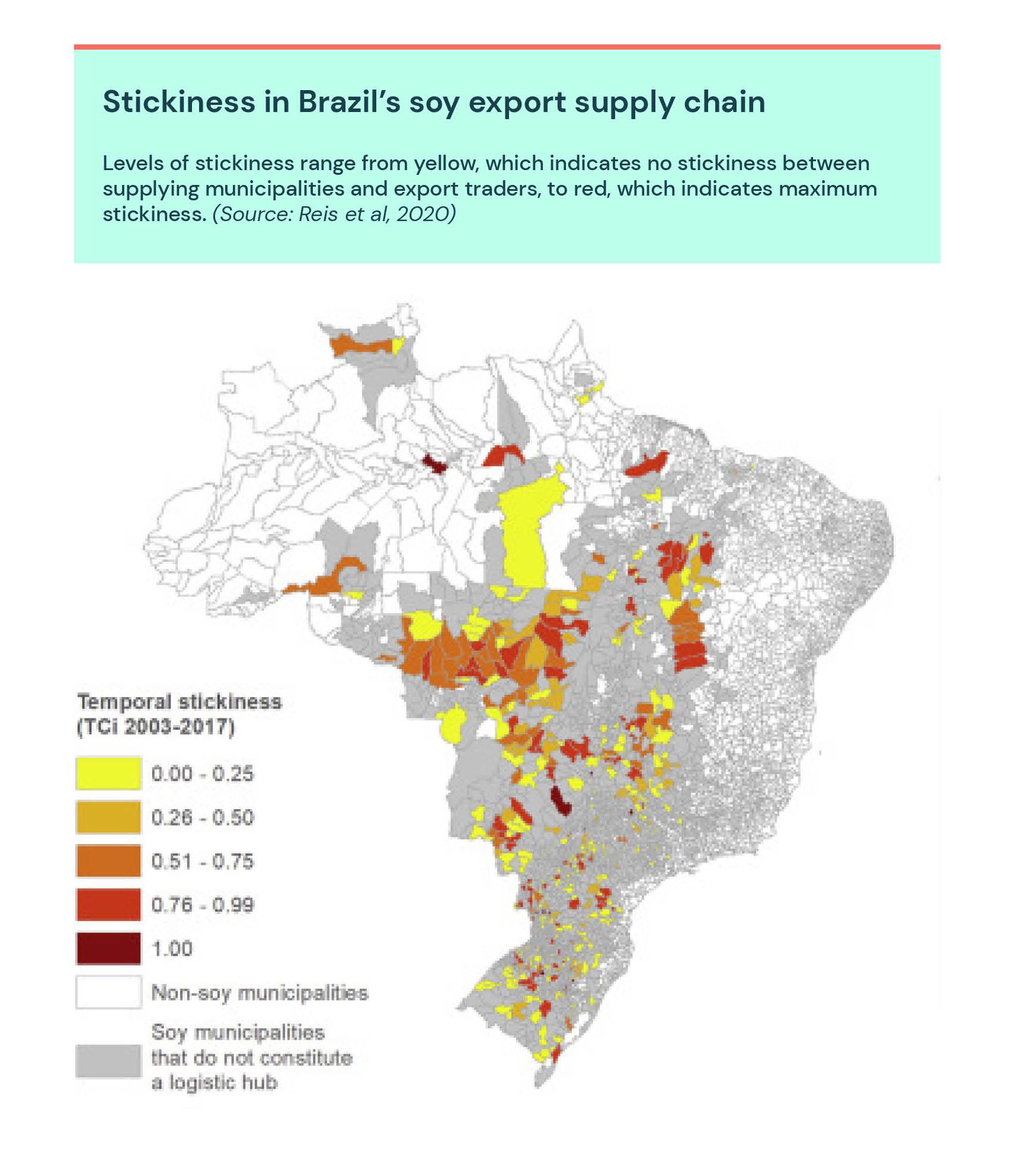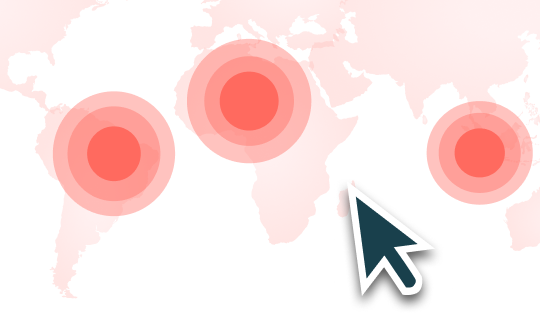The international trade of most agricultural commodities, including soy, beef and palm oil, is controlled by a handful of companies which have considerable influence over the ability of producer countries to achieve sustainability goals on deforestation, biodiversity loss and climate change.
The extent of this influence is greatly affected by a phenomenon called supply chain ‘stickiness’. Stickiness represents how stable or volatile the relationships between trading companies and commodity-growing territories are over time. Supply chain stickiness is one piece of the puzzle that helps us understand how companies can reduce or increase deforestation.
Research about supply chain stickiness in the trade of agricultural commodities has produced several key insights.
Building on Trase supply chain data tracing the network of sourcing connections between soy traders and logistics hubs in Brazil over 2003-2017, research demonstrated that it is possible to quantify stickiness in supply chains and showed that stickiness was highly heterogeneous. Some production regions and traders have very stable and persistent trading connections, selling or buying soy consistently with the same partners over years, while others have highly unstable or volatile relations, largely reorganising their trading networks from year to year.

Influencing business behaviour and patterns of deforestation
A subsequent study using Brazilian soy export data showed that stickiness influenced business behaviours and patterns related to deforestation. Companies with a stickier sourcing pattern were more likely to adopt zero-deforestation commitments (ZDC). However, this stickier sourcing pattern is also associated with higher levels of soy deforestation exposure and territorial deforestation. This means that stickiness tends to increase deforestation despite also increasing traders’ zero-deforestation ambitions.
This is because sticky traders drive continued demand for soy from certain regions, which may send encouraging signals to actors on the ground to expand production. Moreover, stickiness may also create lock-in effects where traders become dependent on certain suppliers, thus hindering traders from switching to producers complying with ZDC criteria. Conversely, low-stickiness traders may more easily achieve a ZDC, but if this is done by switching to low-deforestation sourcing regions, it may not necessarily contribute to more effective deforestation reduction on the ground.
Although these studies provided a quantifiable concept of supply chain stickiness and showed its interplay with companies’ ZDCs, an understanding of the potential causes of stickiness remained lacking.
Designing interventions to reduce deforestation
A recently published study led by Trase researchers filled this gap, allowing us to think about tailored public policies and supply chain interventions to address deforestation embedded in the trade of agricultural commodities.
This research uncovered various factors that may influence supply chain stickiness, including the existence and ownership of soy processing infrastructure, land-tenure security, social and power relations, biophysical conditions, and levels of technology employed.
Overall, understanding stickiness and these factors can inform, for example, where public subsidies for the construction of soy processing plants should be directed or avoided by governments. Clearly, a government seeking to reduce deforestation should prioritise the development of soy processing infrastructure in agriculturally consolidated regions, with large areas of abandoned or under-utilised pasturelands, while avoiding such development in deforestation hotspots. But the impact of such interventions further depends on the stickiness of supplier relations in a region. Where stickiness is lower, investments in infrastructure will have less effect in either encouraging or discouraging future deforestation.
Stickiness can also inform which traders should be prioritised in efforts to tackle indirect sourcing, which creates a blind spot in traceability mechanisms. As stickier traders are more exposed to deforestation, their indirect suppliers should be assessed first.
In implementing the EU regulation on deforestation-free products, in which higher risk regions should be identified for detailed scrutiny, knowledge of supply chain stickiness can further inform which traders should be prioritised as having the highest potential for driving deforestation reductions based on their levels of stickiness. This is because low-stickiness companies would tend to shift sourcing locations to comply with the regulation, therefore not driving real changes on the ground, whereas high-stickiness traders will need to engage with local suppliers and stop deforestation as it is harder for them to move away from the problem.
Was this article useful?





